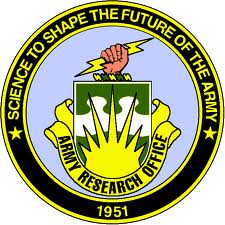Events
Defects by Design: Quantum Nanophotonics in Emerging Materials
28-30 October 2018
OSA Headquarters, Washington, DC United States
Hosts/Facilitators
- Audrius Alkauskas, Center for Physical Sciences and Technology, Lithuania
- Lee Bassett, University of Pennsylvania, United States
- Kai-Mei Fu, University of Washington, United States
Read more about this meeting: Day 1 and Day 2
View the agenda here (PDF)
Overview
Point defects in wide-bandgap semiconductors have emerged as leading platforms for quantum information science and nanophotonics, but most research has concentrated on only a few defect systems and host materials. This Incubator will consider the opportunities and challenges for predicting, identifying, isolating, and utilizing promising new defect systems, particularly those in materials with unique optical, electrical, and mechanical properties.
The goal of the Incubator is to establish new directions for research with optically-active semiconductor defects that take advantage of the unique properties afforded by emerging materials. Building on recent success in harnessing select defects like the diamond nitrogen-vacancy center for diverse applications in quantum information processing, quantum optics, nanophotonics, magnetometry, and biosensing, an opportunity exists to identify analogous systems in new materials that are optimized to improve the performance of applications like these, or that can enable entirely new avenues of research. Recent discoveries of quantum emitters in low-dimensional semiconductors, in particular, promise exciting new opportunities. Given the vast number of potential materials and defect systems, it remains a major challenge to theoretically predict and experimentally identify promising candidates in a systematic way.
This small, invitation-only meeting will bring together experimental, computational, and theoretical scientists to discuss the future of quantum engineering with optically-active semiconductor defects. Through a combination of invited presentations and moderated group discussions, participants will discuss recent progress in identifying and controlling new defect systems, address key challenges facing the field, and propose solutions to overcome current limits and open new research areas.
This Incubator is supported in part by:

Key Topics & Questions to Explore
- Why Defects?
- What makes a “good” defect for quantum science & technology?
- What existing application areas are best suited to quantum defects (and which are not)?
- What new areas are ripe for exploration using quantum defects?
- Defects in New Materials
- How can we efficiently create & identify new defects?
- How can we control defect creation and placement at the atomic scale?
- What opportunities are provided by host materials “beyond group IV”?
- Defects by Design
- How can we predict defect properties to guide discovery?
- What new theoretical tools are needed to give a holistic treatment and prevent “convergence to experiments”?
- What is the importance and influence of the material host (e.g., dimensionality, composition, symmetry)? What are the most promising candidates?
- How can we engineer desired defect properties (e.g., using nanophotonics, materials properties, device design, or active control schemes)?
